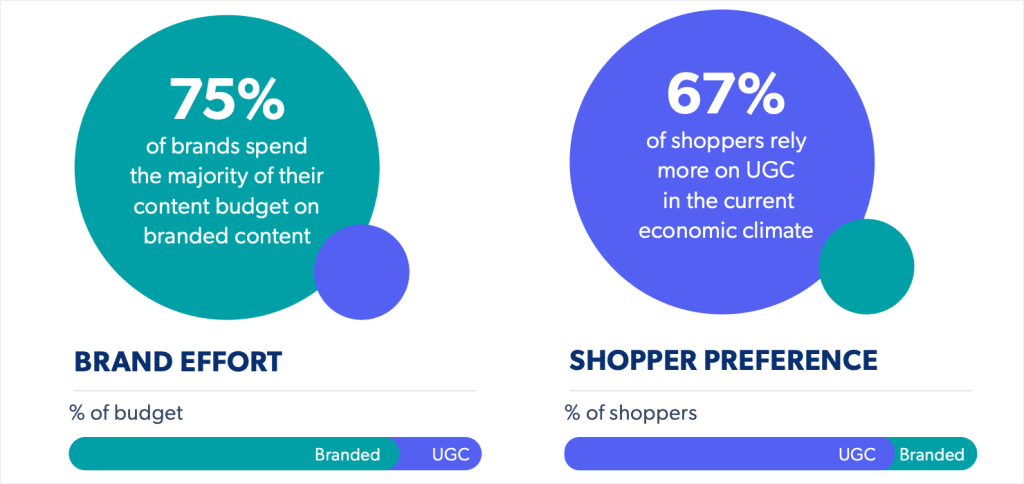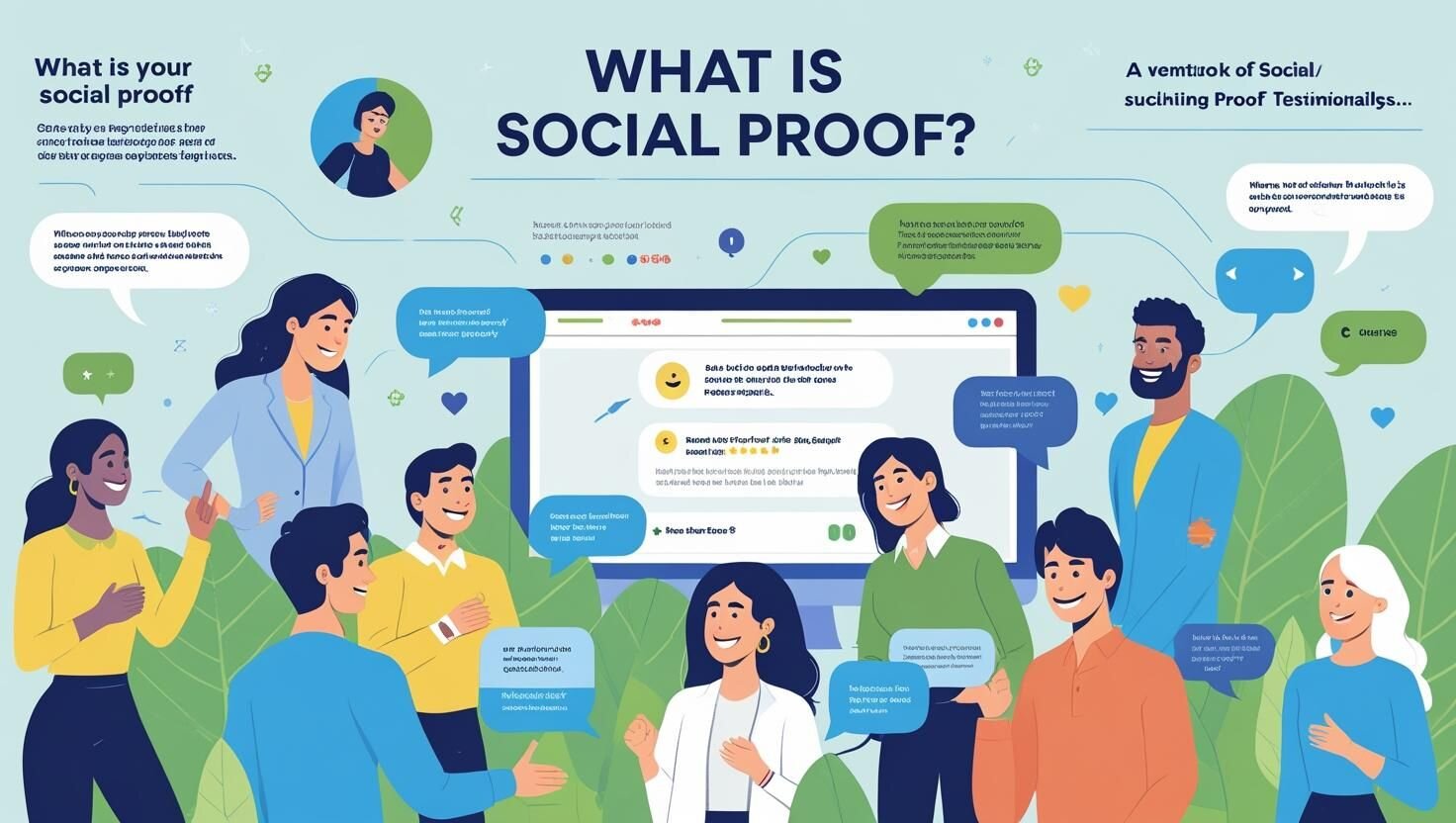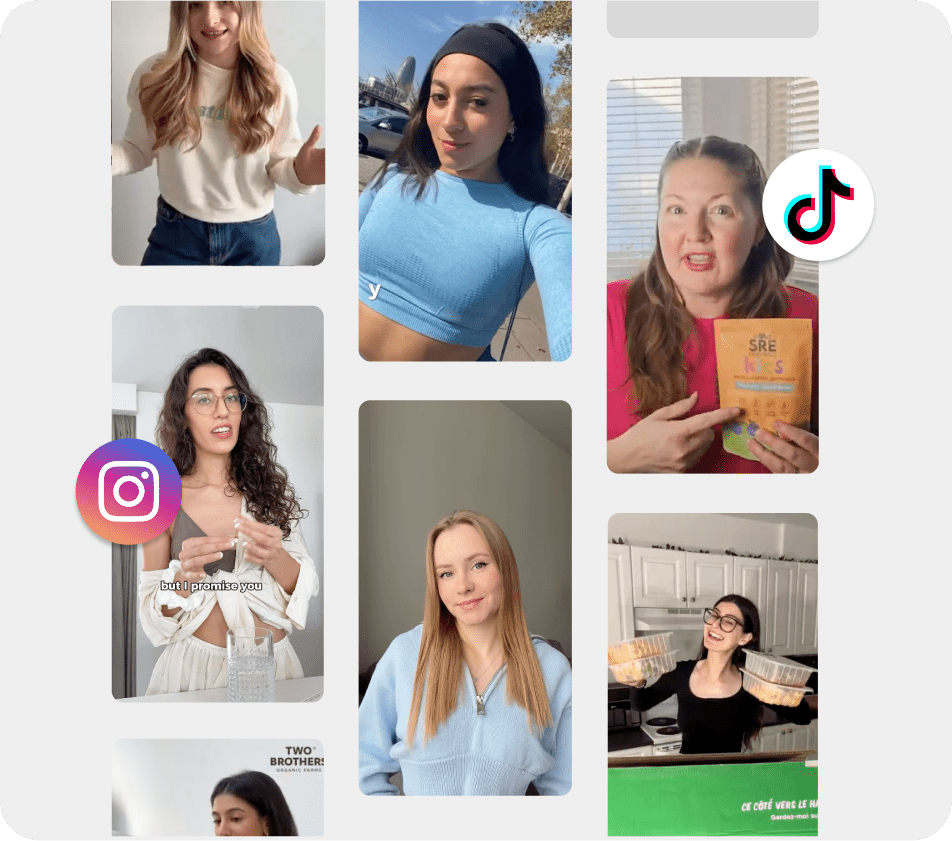In today’s online world, people trust people. Before buying a product, booking a service, or trying something new, most of us look for reviews, ratings, or recommendations. That’s where social proof comes in.
Let’s explore what social proof means, why it works, its different types, and how you can use it to grow your business.
What is Social Proof?
Social proof is the concept that people tend to emulate the actions of others to make informed decisions. In simple words, when we see others doing something, we’re more likely to do the same.
For example, if a restaurant is always full, we assume the food must be good. Online, if a product has 5-star reviews, we’re more likely to trust it.
The term was popularized by psychologist Robert Cialdini, who explained how social influence plays a significant role in shaping decisions.

Source: optinmonster
Why is Social Proof Important?
Social proof builds trust and removes doubt. It shows potential customers that others have already had a good experience with your brand. This helps in:
- Increasing conversions and sales
- Building brand credibility
- Reducing customer hesitation
- Boosting engagement on websites and social media
Especially in e-commerce and digital marketing, social proof is a powerful tool to influence buyer decisions.
Types of Social Proof (With Examples)
There are many ways to utilize social proof. Here are the most common types:
1. Customer Reviews & Testimonials
People love hearing what other customers have to say. Displaying positive reviews on your product pages builds instant trust.
✅ Example: Amazon product pages show customer ratings and written reviews right below every product.
2. User-Generated Content (UGC)
UGC Photos or UGC videos created by real customers are one of the strongest forms of social proof. It’s authentic and relatable.
✅ Example: Fashion brands use Instagram photos of customers wearing their products as social proof.
3. Social Media Likes, Shares & Comments
A post with thousands of likes and comments automatically feels more trustworthy and popular.
✅ Example: “Over 20k people liked this reel” signals quality and value.
4. Influencer or Celebrity Endorsements
When a trusted public figure recommends a brand, their audience is more likely to follow.
✅ Example: A skincare influencer promoting your product builds social proof through trust.
5. Expert Approval
If an industry expert or professional vouches for your brand, it boosts your credibility.
✅ Example: “Dentists recommend this toothpaste” or “Used by professional athletes.”
6. Wisdom of the Crowd
Showing how many people have bought, visited, or signed up adds strong social proof.
✅ Example: “1,000+ people bought this today” on a product page.
7. Wisdom of Friends
Recommendations from friends or connections increase the chances of a person trusting a brand.
✅ Example: “Your friend Aayush liked this page” on Facebook.
8. Trust Badges and Certifications
Third-party trust marks, such as “Secure Checkout” or “Google Reviews Verified,” make your website appear safe and professional.
How to Use Social Proof in Your Marketing
Here are the best ways to use social proof across your marketing efforts:
✅ On Product Pages
Add reviews, ratings, and photos from happy customers. If possible, indicate the number of people viewing or purchasing the item.
✅ On Landing Pages
Use testimonials, case studies, or real-time pop-ups, such as “Someone in Delhi just signed up.”
✅ In Ads
Run UGC-based ads using customer videos or influencer reviews. These are more effective than scripted ads.
✅ On Social Media
Encourage customers to tag your brand and reshare their content. Create story highlights or reels with real customer experiences.
✅ In Emails
Add a testimonial or user quote to your UGC email campaigns to increase clicks and engagement.
Tools to Collect and Display Social Proof
Here are some tools that help brands collect and show social proof effectively:
- Tagbox – Collect UGC from Instagram and display it beautifully on websites or screens
- Trustpilot / Yotpo – For collecting verified reviews
- Fomo / Proof – For showing real-time activity notifications
- Loox – For photo reviews in e-commerce
These tools automate the process and help you boost trust instantly.
Mistakes to Avoid While Using Social Proof
- ❌ Using fake reviews or testimonials – People can spot inauthenticity
- ❌ Overloading pages with pop-ups – It can feel spammy
- ❌ Not updating reviews regularly – Outdated proof loses impact
- ❌ Ignoring negative feedback – It’s better to respond than hide it
Social Proof vs. Traditional Advertising
| Feature | Social Proof | Traditional Ads |
|---|---|---|
| Trust Level | High (real people) | Medium (brand-led) |
| Cost | Low (often free) | High (paid campaigns) |
| Engagement | Organic | Often skipped |
| Impact | Long-term influence | Short-term attention |
In short, social proof is more authentic, cost-effective, and influential today.
Conclusion
Social proof isn’t just a marketing buzzword—it’s a real, powerful strategy that influences how people see your brand. From reviews to UGC, expert mentions to social shares, it creates a ripple effect of trust.
If you haven’t started using social proof yet, now’s the time. Start small—collect testimonials, showcase UGC, and let your happy customers do the talking.


